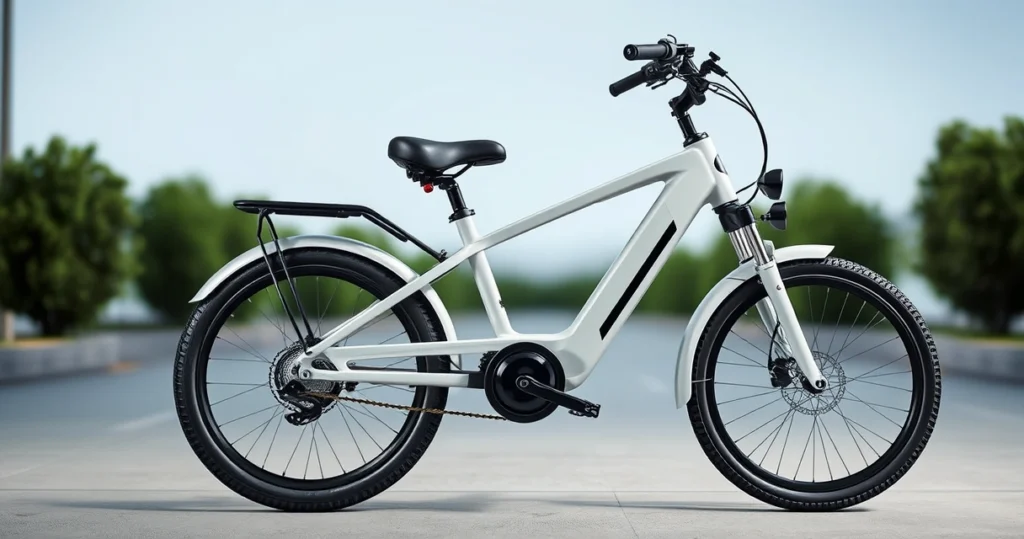As the popularity of electric bikes continues to soar, many individuals are considering making their first purchase. Whether you’re looking to enhance your commuting experience, enjoy weekend rides, or explore the great outdoors, an electric bike (e-bike) can be a fantastic option. However, with a myriad of choices available today, understanding the different classes of e-bikes, their range, and maintenance needs is crucial in making an informed decision. This guide aims to provide you with all the essential information you need before diving into your first electric bike purchase in 2025.

In this comprehensive buying guide, we will cover the various classes of electric bikes, what to consider regarding range, and how to approach repairs and maintenance post-purchase. With insights from industry experts, you’ll be equipped with the knowledge to find the perfect e-bike that meets your needs and budget.
Understanding Electric Bike Classes
Electric bikes are categorized into three main classes based on their power output and speed capabilities. Understanding these classes is vital as it directly influences your riding experience, legal regulations, and usability.
Class 1: Pedal-Assist Only
Class 1 e-bikes provide assistance only when the rider is pedaling. This means that the motor will engage to help you pedal but will not operate if you are not pedaling. These bikes are often considered the most bike-like option and are permitted on most bike paths and trails.
Class 2: Throttle-Activated
Class 2 bikes come equipped with a throttle feature, allowing riders to engage the motor without pedaling. While this can be convenient for starting off from a stop, many jurisdictions impose restrictions on where Class 2 bikes can be ridden, so it’s essential to check local laws.
Class 3: Speed Pedelec
Class 3 e-bikes provide pedal-assist up to 28 mph. While they offer a higher speed, they are typically subject to more regulations and may not be allowed on all bike paths. Riders of Class 3 bikes are often required to wear helmets, especially in certain states.
Determining Range: What You Need to Know
Range is a critical factor to consider when buying an electric bike. It refers to how far you can travel on a single charge, which is influenced by several factors:
- Battery Capacity: Measured in watt-hours (Wh), a higher capacity usually means a longer range.
- Riding Conditions: Terrain, weather, and rider weight can all affect how far you can go.
- Assist Level: The level of assistance you choose impacts battery usage. Higher assistance levels drain the battery faster.
When selecting an e-bike, consider your intended use. For daily commuting, a range of 20-40 miles is generally sufficient. For longer rides or weekend adventures, look for models offering 50 miles or more on a single charge.
Maintenance and Repairs: Keeping Your E-Bike in Top Shape
Like traditional bicycles, electric bikes require regular maintenance to ensure optimal performance. However, e-bikes have additional components that may need special attention. Here’s what to keep in mind:
Routine Maintenance Tasks
Regular maintenance tasks for e-bikes include:
- Tire Pressure: Check tires regularly to ensure they are adequately inflated for a smooth ride.
- Brake Inspection: Regularly check brake pads for wear and replace them as necessary.
- Chain Lubrication: Keep the chain lubricated to prevent rust and ensure smooth riding.
- Battery Care: Follow manufacturer guidelines for charging and storing the battery to prolong its lifespan.
Common Repairs
While e-bikes are generally reliable, issues may arise. Common repairs include:
- Battery Replacement: Over time, batteries may lose capacity and need replacement.
- Motor Issues: If the motor isn’t functioning correctly, it may need professional servicing.
- Electrical Problems: Wiring issues or electronic malfunctions can often require expert attention.
Choosing the Right Electric Bike for You
When it comes to selecting your first electric bike, consider the following factors:
- Purpose: Determine what you will primarily use the bike for—commuting, recreational riding, or off-road adventures.
- Budget: Set a budget that includes the cost of the bike and potential accessories.
- Test Rides: Always test ride multiple models to find one that feels comfortable and meets your needs.
- Warranty and Support: Look for brands that offer good warranties and customer support.
Frequently Asked Questions (FAQs)
1. What is the average cost of an electric bike?
The cost of an electric bike can vary widely, typically ranging from $500 to over $5,000, depending on the brand, features, and quality.
2. How do I charge an electric bike?
Most e-bikes come with a charger that plugs into a standard outlet. Charging times vary by model but generally take between 4-6 hours for a full charge.
3. Can I ride an electric bike in the rain?
Most electric bikes are designed to withstand some moisture, but it’s advisable to avoid riding in heavy rain to prevent damage to electrical components.
4. How long do electric bike batteries last?
On average, electric bike batteries can last anywhere from 3 to 7 years, depending on usage and care.
5. Are electric bikes legal everywhere?
While e-bikes are legal in most places, regulations vary by location. Always check local laws regarding where you can ride, especially concerning bike paths and trails.
Conclusion
Purchasing your first electric bike in 2025 can be an exciting journey that opens up new avenues for transportation and leisure. By understanding the different classes of e-bikes, considering your range needs, and knowing how to maintain and repair your bike, you can make a well-informed decision that aligns with your lifestyle and preferences. With the right knowledge and preparation, you’ll be ready to hit the road on your new electric bike, enjoying the freedom and efficiency it brings.
📰 Original Source
Este artigo foi baseado em informações de: https://www.wired.com/story/how-to-buy-an-electric-bike/



